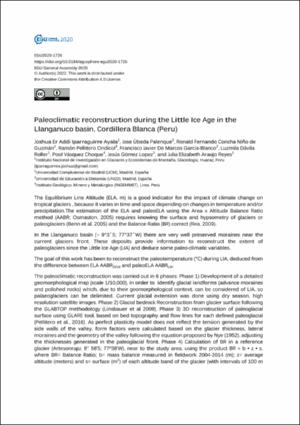Por favor, use este identificador para citar o enlazar este ítem:
https://hdl.handle.net/20.500.12544/4364Ficheros en este ítem:
| Fichero | Descripción | Tamaño | Formato | |
|---|---|---|---|---|
| Iparraguirre-Paleoclimatic_reconstruction_Llanganuco_Basin.pdf | Artículo de congreso | 293.84 kB | Adobe PDF | Visualizar/Abrir |
| 2020-Iparraguirre-Paleoclimatic-PPT.pptx | 15.4 MB | Microsoft Powerpoint XML | Visualizar/Abrir |
Este ítem está sujeto a una licencia Creative Commons Licencia Creative Commons












